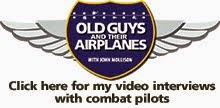Oh it LOOKS like I'm more than half-done. But I'm not. I'd say a third-the-way-there.
It's a quirky bugger to draw—the simple shapes are almost always so because in aircraft design, very little is left to chance. The days of aircraft drawn purely for aesthetics crashed with the Great Depression. By 1952, when the designers at Convair were nerding-out over their slide rules, flight was a definite science, especially due to the increased speeds afforded by jet power and expanded missions demanded by the growing Red Threat.
When I was a little kid, I remember checking a book out from the library and reading about how the "Duece" prototype was not able to go supersonic (in spite of its looks). However, when the fuselage was "pinched," the drag created by the flow of air around the fuselage was sufficiently reduced to the point where the extra "oomph" to break Mach was within reach of the throttle. Funny how things like that go, but that little factoid helped me understand drag and aerodynamics a lot more.
Have a look and imagine the airflow and resultant pressure gradients yourself... (if you're bored).
Though you can't really "see" the pinched fuselage in my profile drawing, it will need to be there in subtle shading and contour. I haven't quite figured how to do it yet. But I will. I have to. "444"'s pilot is definitely one of those slide-rule pilots who can do density-altitude, weight-balance and speed calculations while he's shaking hands and introducing himself. If I've learned anything about pilots from the 1960s it's that they're especially preoccupied with the technicalities.
Anyway, it's rather amusing to do this F-102 because it ended up so out-of-place in Vietnam. As an interceptor, it was designed to be a true fighting "system" in that it was purpose-built to climb fast, use radar and launch missiles at attacking bombers. In Vietnam, the 102s were (mostly*) armed with AIM-4 "Falcon" missiles.
Like the Duece itself, the AIM-4 wasn't suited for the type of aerial combat that was commonly encountered in Vietnam. For one, it had a contact-fuse. That meant it had to physically 'hit' the target; others with proximity fuses blew up once they got within a specified radius of the target. Against an invading Tupolev flying heavy, slow and level, the AIM-4 would work just fine. But against the small and bee-like MiGs? The AIM-4 was like the chubby kid in the middle of a game of keep-away.
According to one source, during a three month period between 1967 and 1968, 54 AIM-4's were launched against North Vietnamese fighters. Four hit. That's a 7% hit rate. With six Falcons on board, it'd take more than two F-102 launching their entire missile bay to get one victory. Ouch.
If you've been following this particular project—and judging by the statistics, more than a couple of you are—I'm guessing you're not here to read F-102 bashing. That's not my aim anyway. Instead, I hope to show how the airplane, in fact, kicked butt! Only it's going to take Jim's slide-rule brain to help me.
Love this airplane. :)
*The F-102 flew a comparatively small number of air-to-ground missions in Vietnam. During these missions, rockets were also used.
It's a quirky bugger to draw—the simple shapes are almost always so because in aircraft design, very little is left to chance. The days of aircraft drawn purely for aesthetics crashed with the Great Depression. By 1952, when the designers at Convair were nerding-out over their slide rules, flight was a definite science, especially due to the increased speeds afforded by jet power and expanded missions demanded by the growing Red Threat.
When I was a little kid, I remember checking a book out from the library and reading about how the "Duece" prototype was not able to go supersonic (in spite of its looks). However, when the fuselage was "pinched," the drag created by the flow of air around the fuselage was sufficiently reduced to the point where the extra "oomph" to break Mach was within reach of the throttle. Funny how things like that go, but that little factoid helped me understand drag and aerodynamics a lot more.
Have a look and imagine the airflow and resultant pressure gradients yourself... (if you're bored).
Though you can't really "see" the pinched fuselage in my profile drawing, it will need to be there in subtle shading and contour. I haven't quite figured how to do it yet. But I will. I have to. "444"'s pilot is definitely one of those slide-rule pilots who can do density-altitude, weight-balance and speed calculations while he's shaking hands and introducing himself. If I've learned anything about pilots from the 1960s it's that they're especially preoccupied with the technicalities.
Anyway, it's rather amusing to do this F-102 because it ended up so out-of-place in Vietnam. As an interceptor, it was designed to be a true fighting "system" in that it was purpose-built to climb fast, use radar and launch missiles at attacking bombers. In Vietnam, the 102s were (mostly*) armed with AIM-4 "Falcon" missiles.
Like the Duece itself, the AIM-4 wasn't suited for the type of aerial combat that was commonly encountered in Vietnam. For one, it had a contact-fuse. That meant it had to physically 'hit' the target; others with proximity fuses blew up once they got within a specified radius of the target. Against an invading Tupolev flying heavy, slow and level, the AIM-4 would work just fine. But against the small and bee-like MiGs? The AIM-4 was like the chubby kid in the middle of a game of keep-away.
According to one source, during a three month period between 1967 and 1968, 54 AIM-4's were launched against North Vietnamese fighters. Four hit. That's a 7% hit rate. With six Falcons on board, it'd take more than two F-102 launching their entire missile bay to get one victory. Ouch.
Photo: an AIM-4 being man-handled by a bunch of North Dakota ANG airwomen.
Source unknown but I'd sure like to know what Mr. Cameraman was thinking...
If you've been following this particular project—and judging by the statistics, more than a couple of you are—I'm guessing you're not here to read F-102 bashing. That's not my aim anyway. Instead, I hope to show how the airplane, in fact, kicked butt! Only it's going to take Jim's slide-rule brain to help me.
Love this airplane. :)
*The F-102 flew a comparatively small number of air-to-ground missions in Vietnam. During these missions, rockets were also used.
















